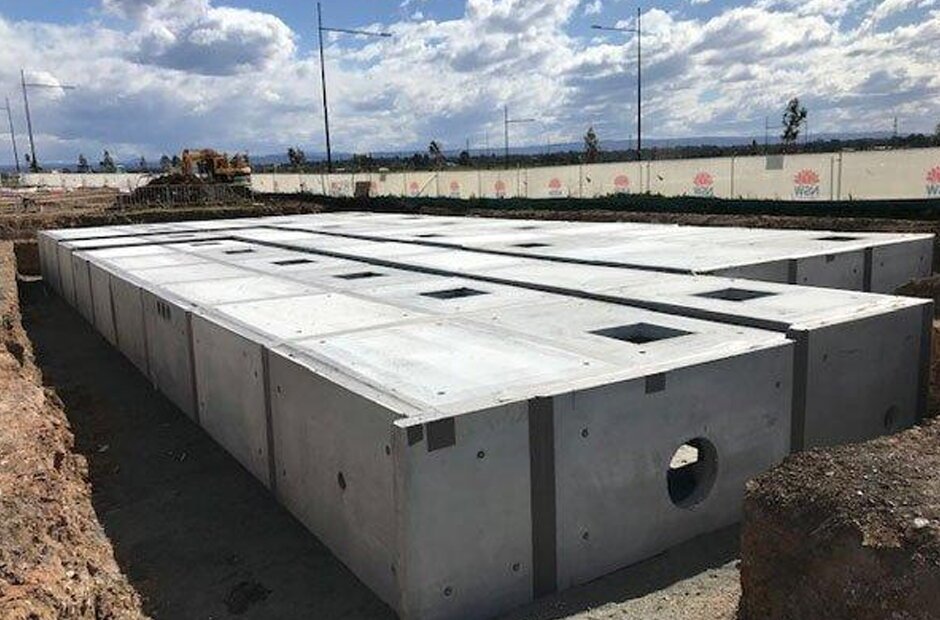In densely populated urban centres, efficient water management is critical to the safety and sustainability of the environment. Strategically designed infrastructure plays a vital part in controlling the flow and storage of rainwater, which if not managed properly, can lead to flooding and substantial damage. One pivotal element in urban water management strategies is the implementation of OSD tanks. This article delves into the significance of these systems and the impact they have on urban safety.
The Imperative of On-Site Detention Tanks
OSD tanks are an integral component for managing excess stormwater in urban areas. As impermeable surfaces such as roads and buildings increase with urban development, the natural absorption of rainwater by the soil is vastly reduced. Consequently, this leads to an augmentation in surface runoff, which must be addressed to prevent the overloading of drainage systems and reduce the risk of urban flooding.
On-Site Detention tanks offer a solution by temporarily holding stormwater runoff and releasing it at a controlled rate into the drainage system. This ensures that the system is not overwhelmed during peak downpours, thereby preventing flood-related damages and promoting public safety.
The Functionality of OSD Tanks
OSD tanks function by intercepting rainwater runoff from roofs, driveways, and other surfaces. The collected water is detained within these tanks for a period, before being slowly discharged to the sewer system or local watercourses. This process crucially mitigates the risk of flash flooding, which can occur when stormwater drains are unable to manage sudden, heavy rainfall.
The controlled release of water from OSD tanks is typically managed through the use of flow control devices. These tools ensure that the flow rate does not exceed the capacity of the downstream drainage system. By tampering the release, the tanks play a role not only in flood prevention but also in protecting the integrity of the water management infrastructure.
Environmental Benefits of OSD Tanks
Beyond the protection they offer against urban flooding, OSD tanks contribute positively to the environment. By retaining stormwater, they allow impurities and pollutants that may have been swept up in runoff to settle before the water is released. This means the water entering the natural systems is cleaner, leading to improved water quality in local streams, rivers, and estuaries.
Moreover, these tanks actively contribute to replenishing groundwater levels. The delayed discharge allows more time for water to seep into the ground, promoting the natural recharge of aquifers. This is particularly important in urban areas where the barrier of non-porous surfaces often restricts groundwater replenishment.
Urban Development and OSD Tank Implementation
As urban development advances, councils and governing bodies increasingly mandate the use of OSD tanks in new developments. The scalable nature of these tanks makes them suitable for a variety of projects, from residential to commercial and industrial applications. They are adaptable to different sizes and can be custom built to meet specific site requirements, ensuring flexibility and integration into various urban planning designs.
Importantly, reflecting the growing awareness of the importance of sustainable urban development, OSD tanks align with green infrastructure principles. They support water-sensitive urban design, which seeks to minimise environmental impact and enhance urban liveability through the smart management of water resources.
Considerations for Installing OSD Tanks
For effective performance, several critical factors are considered when designing and installing OSD tanks. The size and capacity of the tank must correlate with the size of the catchment area and the local rainfall intensity. Proper placement is also key, to ensure that the tanks are strategically located to capture maximum runoff.
Maintenance considerations are equally important. OSD tanks must be regularly inspected and maintained to perform optimally. This includes cleaning the tanks and repairing any damages to the structure or flow control devices to ensure the tanks are ready to manage stormwater during periods of heavy rain.
Conclusion
Urban areas are continuously threatened by the potential of flooding due to the reduction in natural ground absorption and increased water runoff. The introduction of OSD tanks represents a proactive approach to managing these risks, ensuring that excess water is contained and released in a manner that maintains public safety and the integrity of existing water management systems.
As developers and city planners continue to confront the challenges posed by urbanisation, the strategic deployment of OSD tanks serves as an illustration of innovative water management solutions. By incorporating these vital systems into our urban landscapes, we can design safer and more sustainable cities for the future.
Recognising the paramount importance of controlling and managing stormwater runoff, cities around the world are progressively incorporating OSD tanks into their water management strategies. These systems not only alleviate the immediate dangers of flooding but also promote environmental stewardship by ensuring cleaner water enters our natural waterways. Their role as a cornerstone in contemporary urban planning cannot be underestimated, making them a critical component for ensuring urban safety and sustainability.



